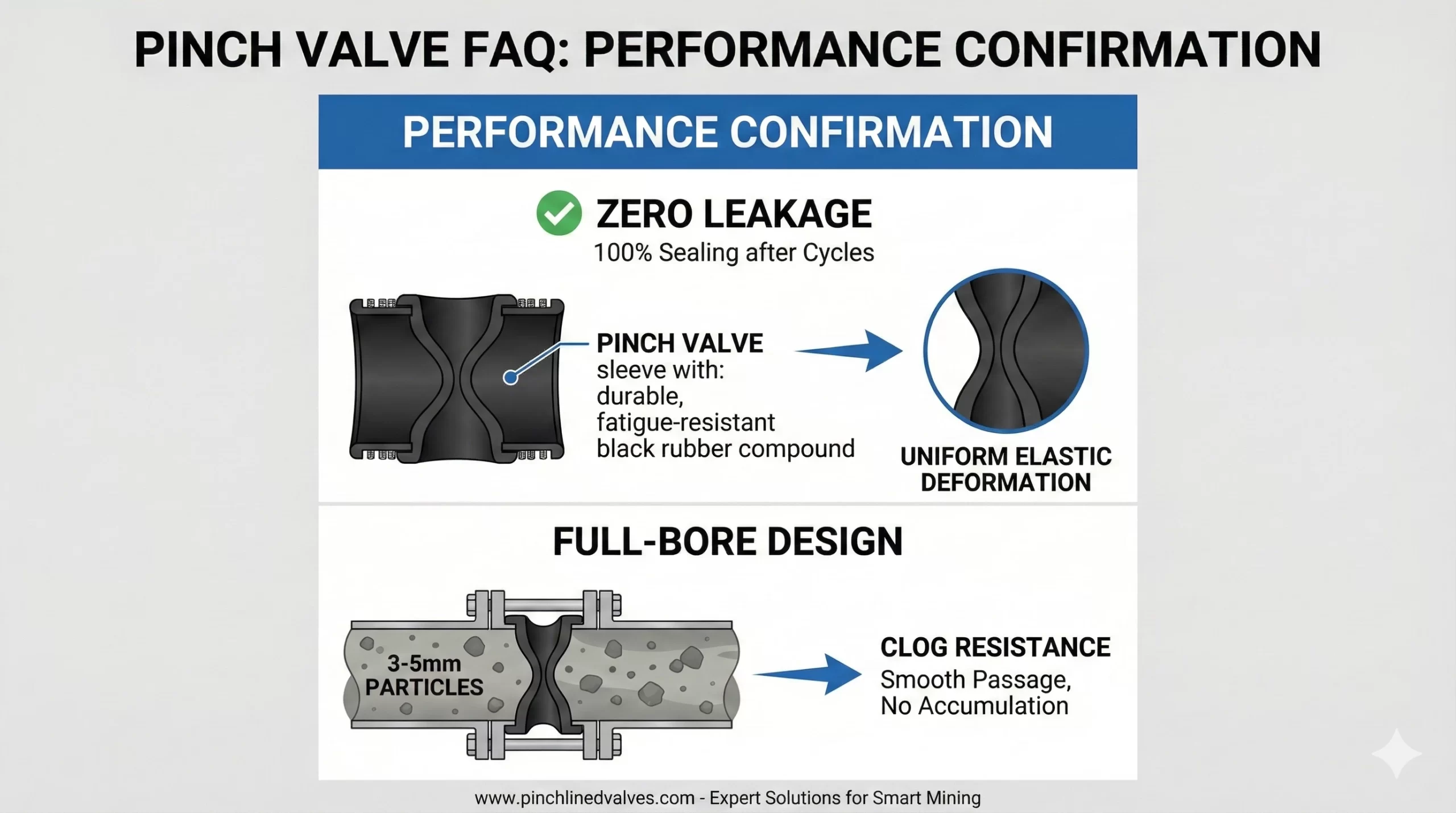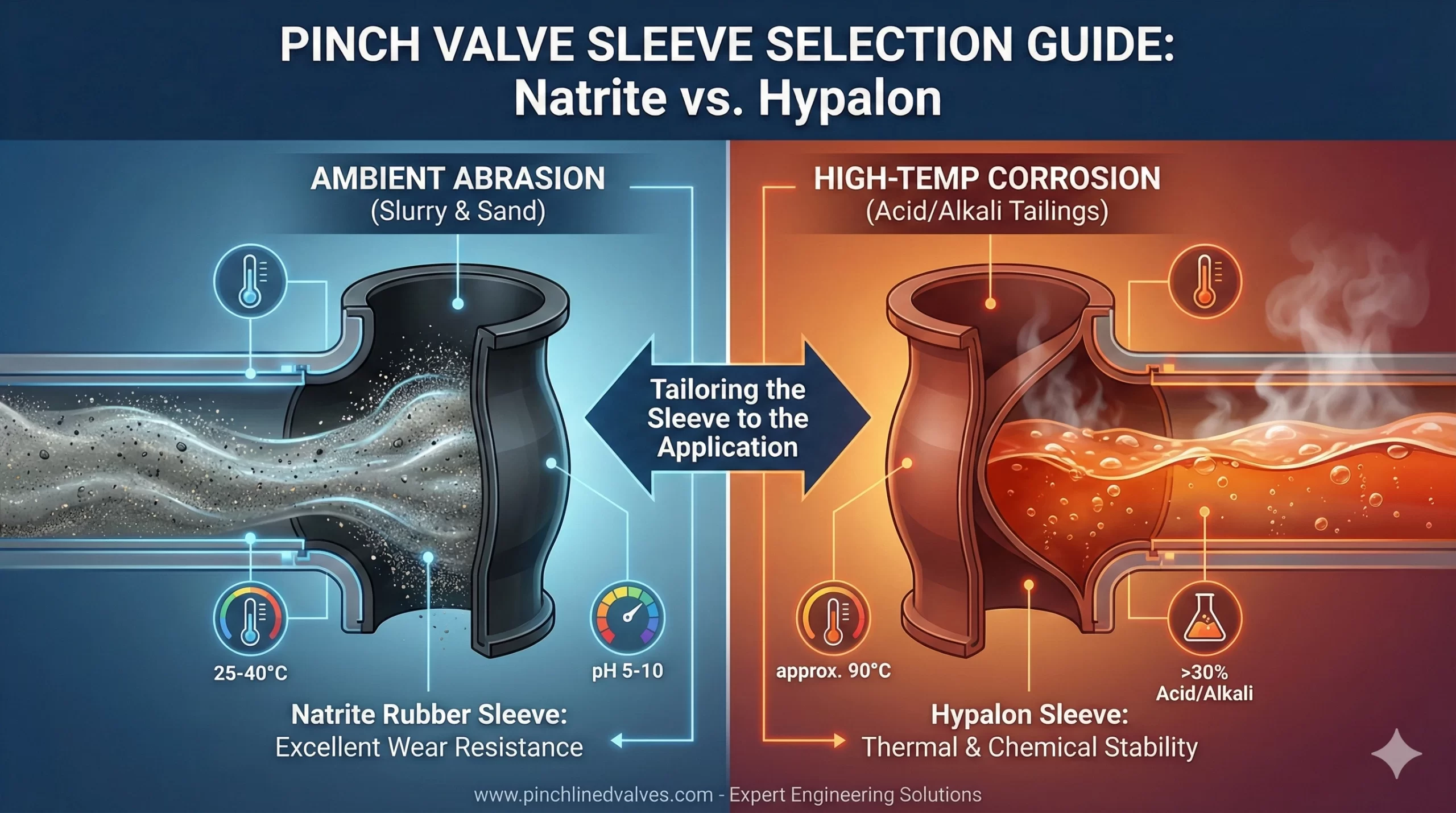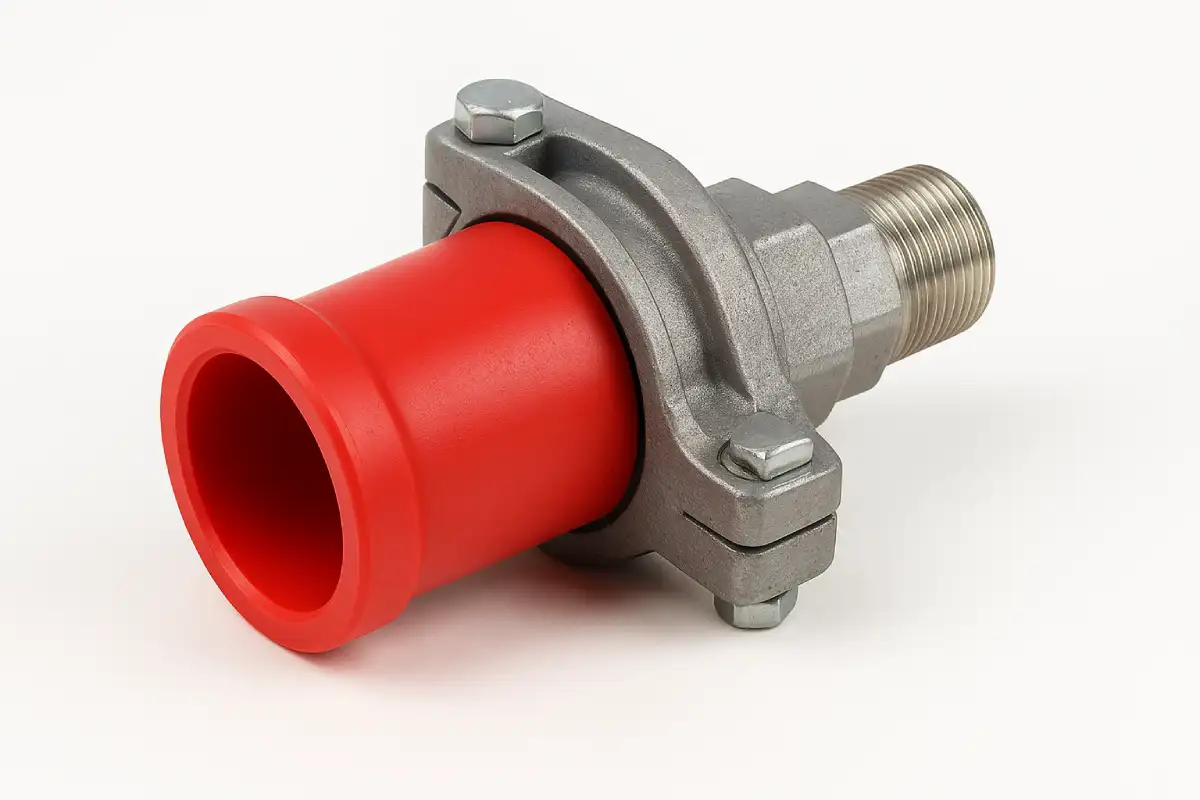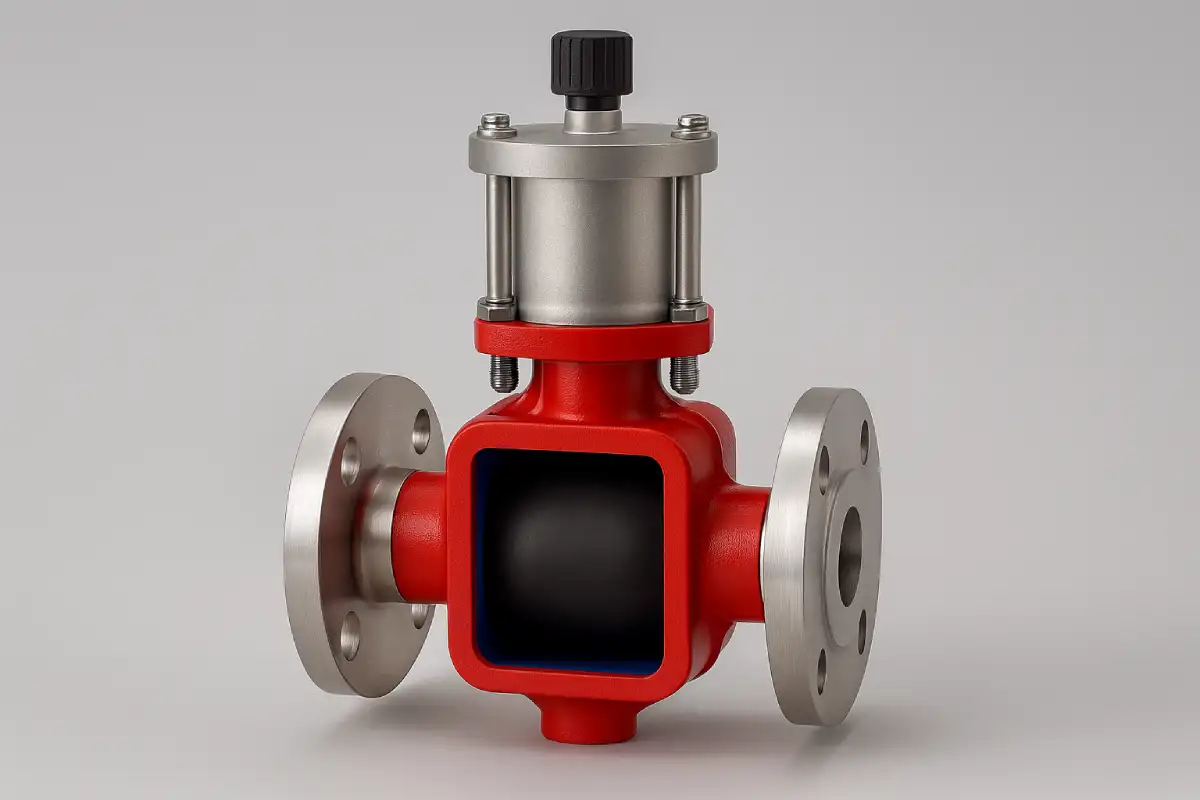

Choosing the right type of pinch valve—manual, pneumatic, or electric—directly affects how your system performs. Each option has clear strengths depending on how your process runs, what kind of control you need, and the infrastructure already in place.
This guide breaks down how they work and where each one fits best.
A manual pinch valve uses a handwheel or lever to compress the sleeve and stop flow. There are no external power requirements, no automation, and almost no risk of system failure due to actuation.
That’s what makes it ideal for low-frequency adjustments, shutoff valves, or systems where budget matters more than speed.
They’re often found in small-scale systems, water treatment lines, or areas where automation isn’t needed. The big advantage? Low cost and simple maintenance. The trade-off is that it requires someone to be there to operate it, which isn’t always practical in a large facility.
If your valve is only opened or closed a few times a week (or less), manual is more than enough.
If speed and automation are priorities, a pneumatic pinch valve is a strong fit. These valves use compressed air to open or close the sleeve, which makes them fast, consistent, and well-suited for remote or high-volume operations.
How does a pneumatic pinch valve work?
Pneumatic pinch valves work by compressing air and pushing it down on a rubber sleeve inside the valve body. This action pinches it closed. Remove the air pressure, and the sleeve springs back open.
It’s a clean operation—no metal touches the fluid, making this valve great for slurries, powders, or corrosive materials
Pneumatic valves are common in food processing, mining, and chemical dosing where systems need to cycle quickly. The only downside? You need a compressed air system. If you already have that in place, this option becomes extremely cost-effective over time.
An electric pinch valve uses a motor and gear assembly to move the valve sleeve. It’s slower than pneumatics but far more precise. You can control the opening percentage, automate sequences, and integrate it with PLCs or SCADA systems.
This makes electric pinch valves ideal for batch processing, water treatment plants, and any system where flow needs to be adjusted gradually—not just opened or closed. They’re also great where air supply is unavailable or costly to maintain.
While electric-actuated pinch valves come with a higher upfront cost, the precision and long-term reliability often justify the investment
Each pinch valve type has a role to play. If you need simplicity, go manual. For fast cycling and remote control, pneumatic is your best bet. If your system needs fine-tuned automation, electric is the way to go.Not sure what fits best? Contact us or explore our pinch valve product page. We’ll help you choose the right solution.

Question 3:Performance Confirmation:Your documentation mentions “zero leakage” and “clog resistance.” We would like to confirm: After long-term operation, will repeated compression cycles cause sleeve fatigue leading to sealing failure? Is the full-bore design truly effective for slurries with larger particles (e.g., 3-5mm)? Answer 3:Confirmation of “Zero Leakage” and “Clog Resistance” Performance (1)Zero Leakage Reliability: Our […]

Material Selection:We are dealing with different working conditions: (1)Question1: Condition A: Ambient temperature (approx. 25-40°C) slurry containing fine sand, where wear resistance is the primary consideration, with weakly corrosive media (pH 5-10). Answer1:(ambient temperature, fine sand, low concentration corrosion, high wear resistance): Preferred recommendation: Natrite Rubber sleeve. Reason: The core advantage of Natrite Rubber lies in its […]

A pinch valve adapter connects a pneumatic pinch valve or manual valve to pipes, tubes, or other parts of a system. With this connector, the valve can manage liquid or gas flow without leaks or strain. It also lets the valve fit in tight or unusual setups. This reduces operational risks and improves overall performance. […]

Yes, they are. Hygienic pinch valves are specially designed to keep things clean and safe, which is why they’re so common in food, pharmaceutical, and biotech environments. Their smooth interior and dead-zone-free design make cleaning quick and reliable. And if the term is new to you, don’t worry, this article will walk you through what […]



